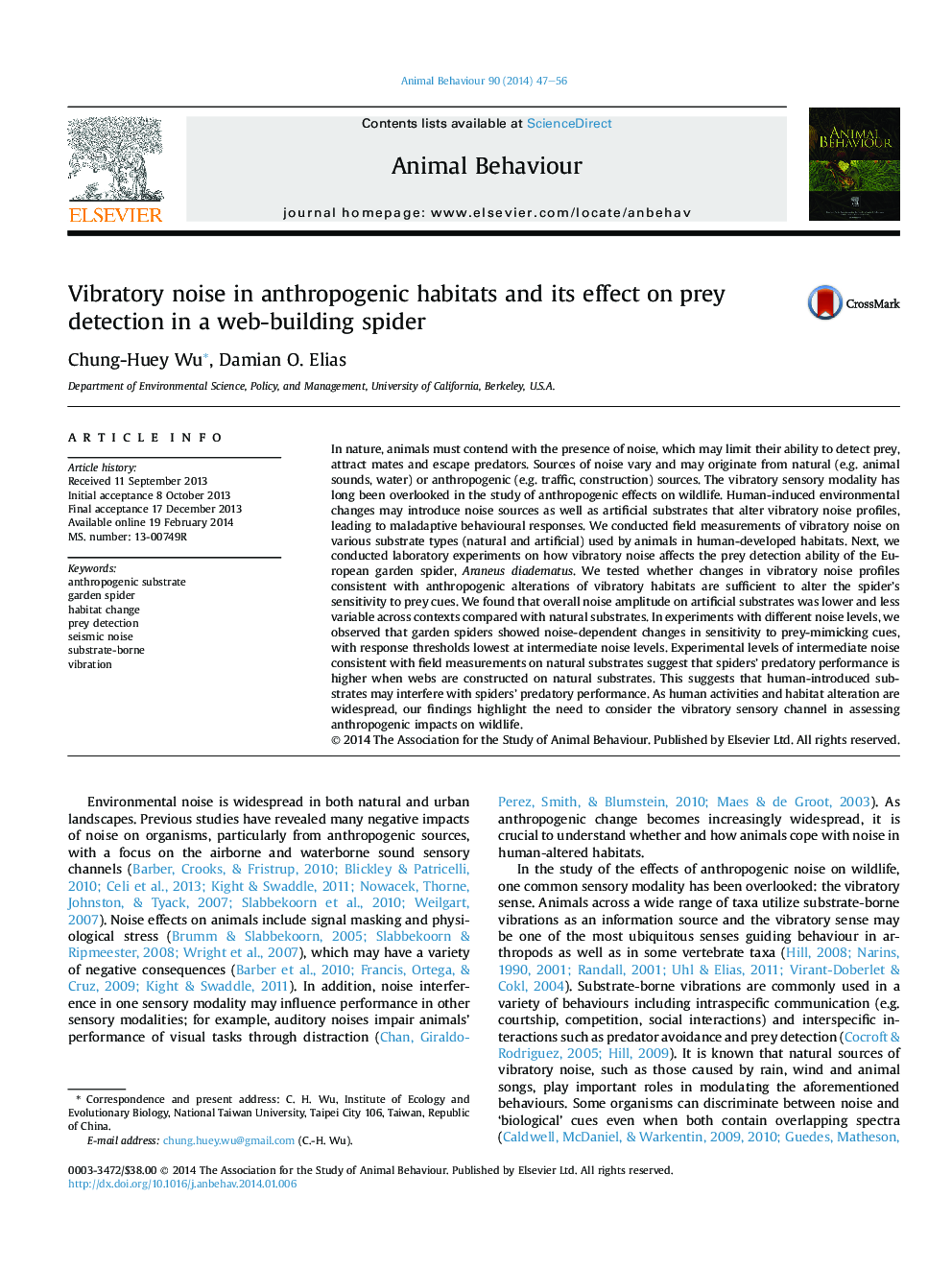| کد مقاله | کد نشریه | سال انتشار | مقاله انگلیسی | نسخه تمام متن |
|---|---|---|---|---|
| 2416376 | 1552238 | 2014 | 10 صفحه PDF | دانلود رایگان |

• We examined vibratory noise across substrate types in human-altered habitats.
• We tested how vibratory noise affects a garden spider's predatory behaviour.
• Overall noise level on artificial substrates was lower compared with natural ones
• Sensitivity to prey cues was lower in noise conditions typical of artificial substrates.
• Human-introduced substrates may interfere with spiders' predatory performance.
In nature, animals must contend with the presence of noise, which may limit their ability to detect prey, attract mates and escape predators. Sources of noise vary and may originate from natural (e.g. animal sounds, water) or anthropogenic (e.g. traffic, construction) sources. The vibratory sensory modality has long been overlooked in the study of anthropogenic effects on wildlife. Human-induced environmental changes may introduce noise sources as well as artificial substrates that alter vibratory noise profiles, leading to maladaptive behavioural responses. We conducted field measurements of vibratory noise on various substrate types (natural and artificial) used by animals in human-developed habitats. Next, we conducted laboratory experiments on how vibratory noise affects the prey detection ability of the European garden spider, Araneus diadematus. We tested whether changes in vibratory noise profiles consistent with anthropogenic alterations of vibratory habitats are sufficient to alter the spider's sensitivity to prey cues. We found that overall noise amplitude on artificial substrates was lower and less variable across contexts compared with natural substrates. In experiments with different noise levels, we observed that garden spiders showed noise-dependent changes in sensitivity to prey-mimicking cues, with response thresholds lowest at intermediate noise levels. Experimental levels of intermediate noise consistent with field measurements on natural substrates suggest that spiders' predatory performance is higher when webs are constructed on natural substrates. This suggests that human-introduced substrates may interfere with spiders' predatory performance. As human activities and habitat alteration are widespread, our findings highlight the need to consider the vibratory sensory channel in assessing anthropogenic impacts on wildlife.
Journal: Animal Behaviour - Volume 90, April 2014, Pages 47–56